Buttercups are seen in lawns all across the UK and the look lovely in meadow grass.
For many gardeners with well cared for lawns, the odd Buttercup isn’t offensive. However, the most common species, the Creeping Buttercup, can take over large areas of lawns very quickly.
The good news is that Buttercups are pretty easy to control.
In this article, I’m going to cover the different species of Buttercup, how to remove them, and how to prevent them from growing back.
Buttercups in a Nutshell
Here’s what you should know about Buttercups;
Appearance
The treatment for controlling and removing Buttercups in your lawn is very much the same for all species. That said, it’s useful to be able to identify which species you’re dealing with.
Creeping Buttercup
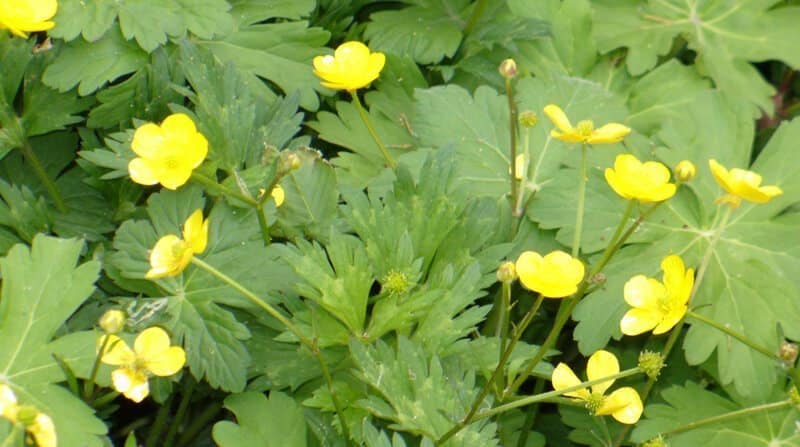
Creeping Buttercup or Ranunculus repens is the most common of all Buttercup species and can become a major nuisance if left to its own devices.
It grows aggressively along the surface, forming runners called Stolons which root at intervals forming new plants.
The leaves bear three lobes that are deeply toothed and the upper lobe is stalked.
Creeping Buttercup has yellow flowers that are almost identical to Bulbous and Crowfoot. They bloom between May and August.
Bulbous Buttercup
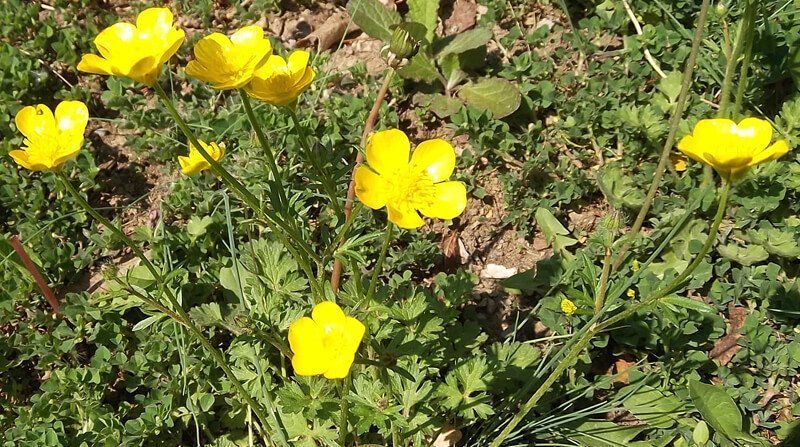
Bulbous Buttercup or Ranunculus bulbosus looks very similar to Creeping Buttercup and you could easily mistake one for the other.
They typically flower between March and June which is earlier than Creeping Buttercup but the flowers look almost identical.
The leaves are also similar to Creeping Buttercup but are smaller and narrower.
Bulbous Buttercup grows and roots differently though and this is the main recognition feature. Unlike Creeping Buttercup that grows along stems, Bulbous Buttercups grow from bulbous roots that form hairy stems.
Crowfoot, or Meadow Buttercup
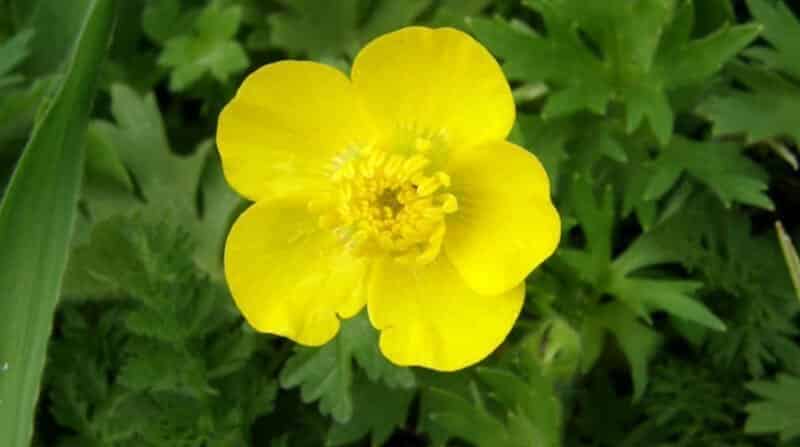
Crowfoot or Ranunculus acris is also known as Meadow Buttercup.
The flowers bloom between May and August, the same time as Creeping Buttercup. They also look identical to those of Creeping and Bulbous Buttercups but the leaves have five lobes to them instead of three.
They grow upwards on stems which can reach 2-3 feet tall which is why some people call them ‘Upright Buttercups’.
Lesser Celandine
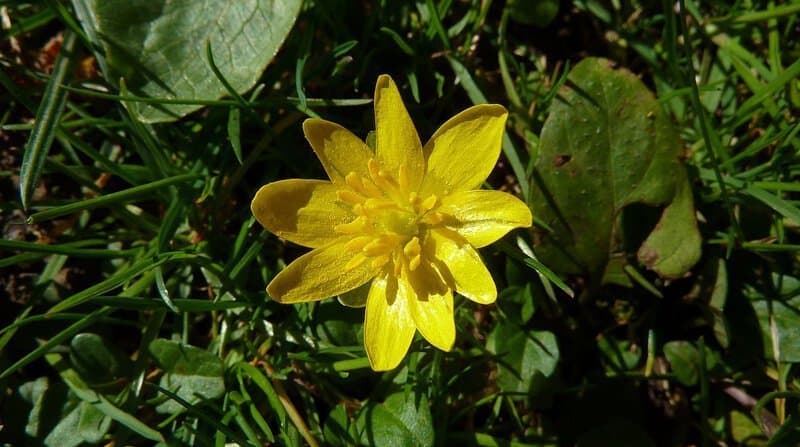
Lesser Celandine or Ranunculus ficaria is the most uncommon of the Buttercups.
It’s also the easiest to tell apart from the rest.
Firstly, the leaves are glossy, heart-shaped and the edges are often slightly wavy. They also grow close to the ground to form a dense rosette.
The flowers are completely different from the other Buttercups. They bloom between March and May and they’re star shaped and not ‘cupped’ at all.
Perennial Weeds
Buttercups are fairly hardy perennial lawn weeds which means they will grow and flower with every new season, unlike annual weeds which die out.
Preferred Habitat
Like most weeds, Buttercups will grow in a range of soils but each species does better in different types;
- Creeping Buttercup loves heavy, wet soils
- Bulbous Buttercup prefers sandy and chalky soils
- Crowfoot excels in damp soils, and
- Lesser Celandine grows best in shady, damp soils
How to Remove Buttercups From Your Lawn
Buttercups can take over your lawn quickly but the good news is that they’re pretty easy to remove with a bit of patience;
Dig them Out
If you only have one or two plants growing in your lawn try digging them out using a trowel or hand fork.
Try to follow and remove as many runners as possible to prevent regrowth.
Kill it With a Spot Spray Weedkiller for Lawns
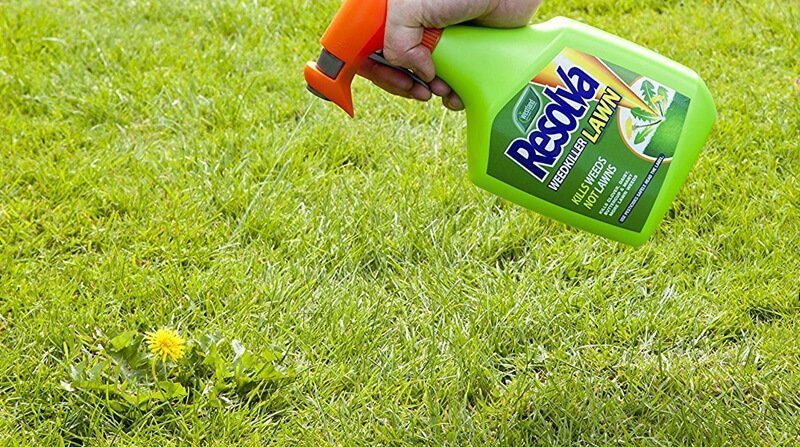
If the plant has returned after digging it out, or you prefer to kill it with a weedkiller, use a selective weedkiller.
Selective weedkillers kill weeds but not grass.
I’d recommend using Scotts Weedol Lawn Weedkiller Spot Spray or Resolva Weedol Lawn Weed Killer.
Give it a blast, you might need to do it again after 6 weeks if the plant is strong.
Spray a Weedkiller Concentrate Over the Whole Lawn
If you have a lot of Buttercup in your lawn along with other weeds, spot spraying might not be enough.
In which case, treat the whole lawn with a weedkiller concentrate like Scotts Weedol Lawn Weedkiller Concentrate.
Concentrated weedkillers are designed to be mixed with water and sprayed onto the lawn with a knapsack sprayer or watering can.
When using concentrate, always read the label and dilute it as per the manufacturers’ instructions. If you mix it too weak, it might not be strong enough to kill the weeds but if you make it too strong, you risk killing the grass as well as the weeds.
Read: How to Choose a Weed Killer For Your Lawn
How to Prevent Buttercup From Growing in Your Lawn
If you’ve just removed any and all Buttercups from your lawn then my guess is that you don’t want it growing back.
If has been growing in your lawn then chances are, there might be other weeds too.
So how do you prevent them from growing back?
Well, having weeds in your lawn is often a symptom of other problems, not the actual problem. Yes, even the most well cared for lawn might be home to the odd weed every now and again. But if you have a lot of weeds it’s a sign that your lawn isn’t as healthy as is should be.
The following a lawn calendar treatment routine will improve the health of your lawn and make it hard for weeds to grow;
Mow the Grass Often

Cutting the grass is the most important, yet most overlooked part of lawn care.
Many people make the mistake of cutting the grass infrequently, letting it grow long and then cutting it too short.
This is bad practice.
When you let the grass grow long, it grows upwards instead of sideways so it doesn’t form new shoots and grass leaves. This can result in a lawn that’s not very dense.
Then when you do cut it, you take away all of its water and food stores. And because you’ve cut away all of its leaf, it can’t trap light and produce food via photosynthesis.
As a result, your grass gets shocked and turns brown, sometimes it even dies.
However, when you cut the grass regularly it can’t grow upwards and it’s forced to grow sideways. This causes the grass to grow new shoots, new roots, and new leaves, resulting in a thicker, lusher, denser lawn.
Mowing the lawn on a regular basis also means that you don’t cut off as much leaf. The grass gets to keep its food and water and is able to produce more food.
Perfect for a healthy lawn!
Read: How to Mow the Lawn Like a Pro: Everything You Should Know About Grass Cutting
Also Read: Which Lawn Mower Should I Buy?
De-Thatch Your Lawn By Scarifying
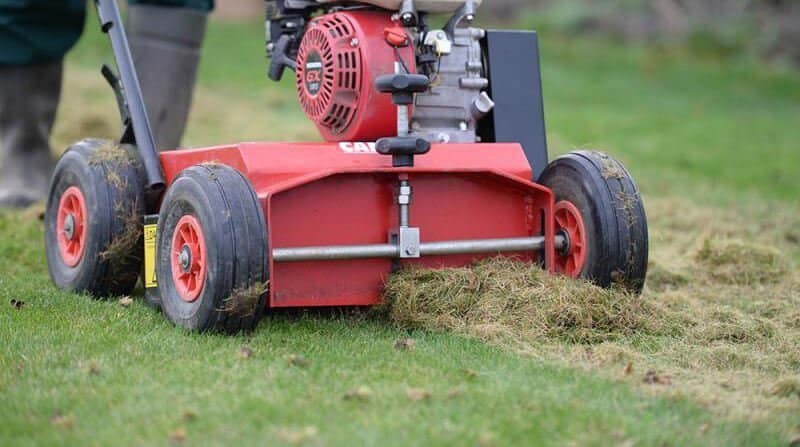
Lawn thatch is a layer of decaying and living organic matter that lies between the grass and the surface of the soil.
It’s made up of old grass clippings and runners that grow above the surface (called Stolons) and below the surface (called Rhyzomes) as well as other material.
All lawns have thatch and some thatch is a good thing as it protects the crown of the grass plant. But too much can prevent water, air and nutrients from penetrating the soil. This means the grass isn’t able to get the nutrients it needs to grow and produce food.
The result is a weak, unhealthy lawn that’s not very dense and feels spongy underfoot. This is the perfect environment for weeds and moss to grow and take over.
Lawn scarification is a simple process that’s used to remove excess lawn thatch. It creates space for water, air and nutrients to penetrate the soil, giving the grass what it needs to grow and stay healthy.
Read: Lawn Scarification: Why, When and How to Scarify Your Lawn (The Ultimate Guide)
Also Read: What’s the Best Manual, Electric and Petrol Scarifier?
Relieve the Lawn of Soil Compaction by Aerating
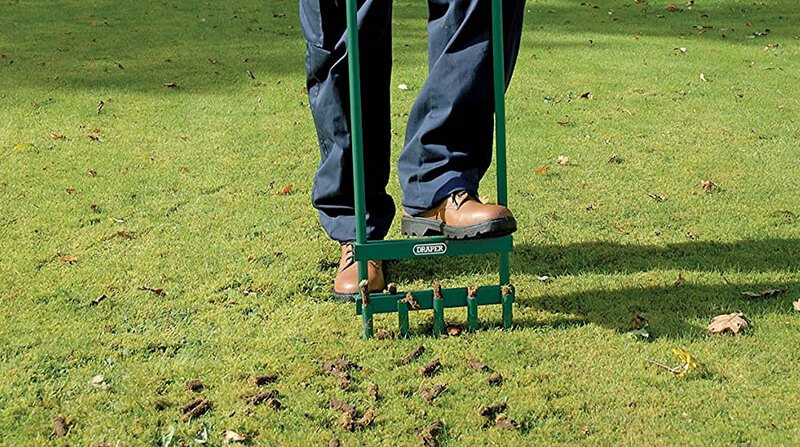
Soil compaction is the result of heavy lawn use.
As the kids and pets play on the lawn, the soil underneath gets compacted. Air and water around the soil particles get squeezed out as they get pushed together.
When air and water get pushed out, it can’t get back in, starving the grass of the nutrients it needs to produce food and grow. Also, roots can’t establish themselves well when the soil is so hard.
The result is hard, often dry ground with threadbare grass which is a paradise for weeds and moss.
Aeration (either through spiking in the spring or hollow-tining in the autumn) allows air, water and nutrients to penetrate the soil, providing the grass with what it needs to grow.
Read: Lawn Aeration: Everything You Need to Know About Aerating Your Lawn (The Ultimate Guide)
Apply a Good Quality Fertiliser at Least Once a Year
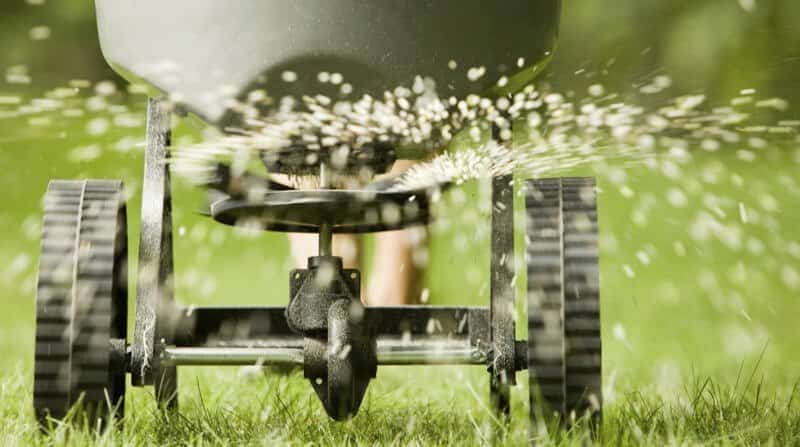
If your lawn is full of thatch and the soil is compacted then the odds are that it’s lacking in nutrients.
Nitrogen, Potassium and Phosphate are vital to the health of the grass and its ability to produce food and grow. Which oftentimes, can only come from fertiliser.
There are many different types of fertilisers all designed to be used at different times of the year. This might be a bit much if you’re not very green-fingered but just one application of a good quality, slow-release fertiliser a year will improve the health and look of your lawn immensely.
Read: Lawn Fertiliser: What, Why, When and How to Feed Your Lawn
Also Read: Which Lawn Feed Should I Use and When? My Top Picks
In Conclusion
Getting rid of Buttercups, like most other weeds is a simple enough task.
But as I have already said, killing and removing weeds is not even half the battle. Weeds are a sign of other problems in your lawn.
Fix them and you’ll severely limit the chances of weeds being able to grow.
The good news is that it’s not difficult or complicated to prevent weeds from growing;
- Scarify your lawn every couple of years to remove excess moss and thatch (usually in the autumn).
- Spike your lawn every spring and autumn to relieve soil compaction. If it’s really bad, hollow tine in the autumn.
- Give your lawn at least one application of a good quality fertiliser per year.
- Mow the lawn frequently.
- Spot spray the odd weed that pops up.
That’s all there really is to it.
If you have any questions or comments, please leave a message below. I’d love to hear from you.
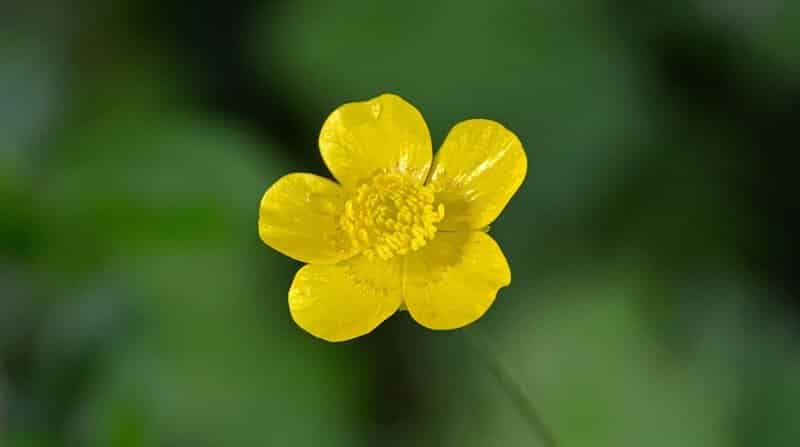

Thanks Tim that’s been really helpful and I now know what to do about my buttercup problems
Hi Tim,
I really appreciate your direction on getting rid of a huge amount of buttercups.
We sprayed it with EcoSense Weed B Gon about 2 weeks ago. The Buttercups turned black, but theyare back.
We want to do organic as we have childlren and a dog that will eventually play on it.
People are saying that an application of straight iron might work.
Many thanks,